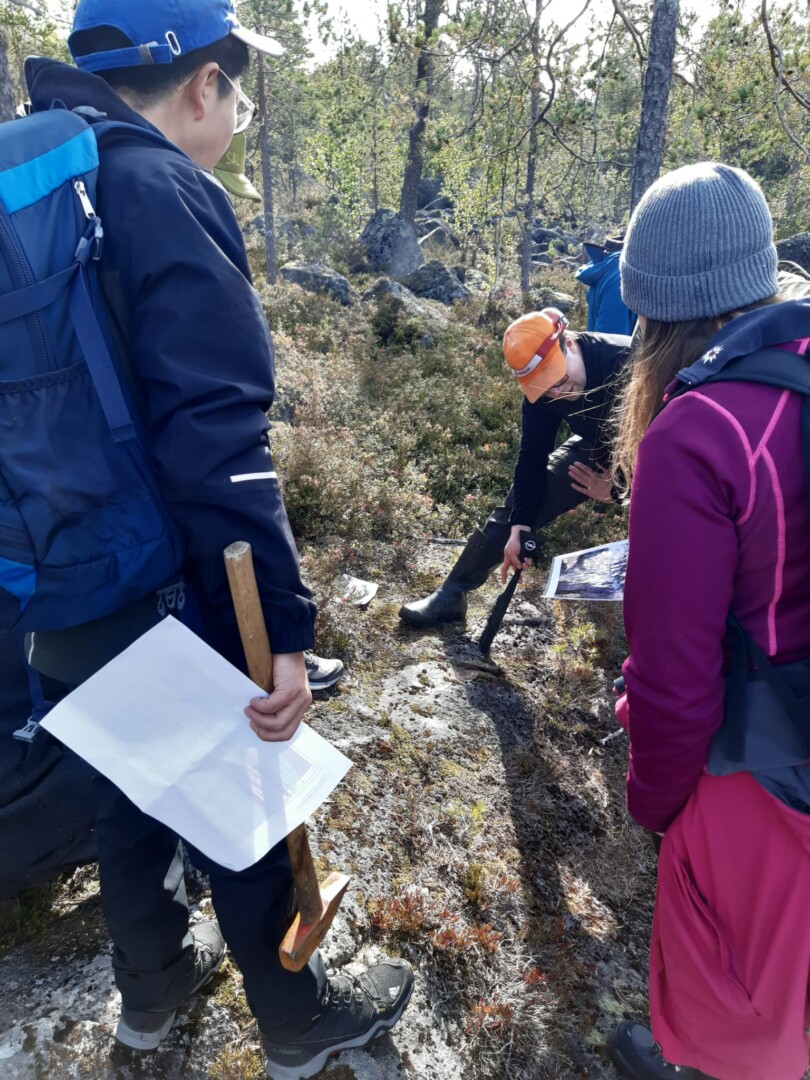Renewable energy and energy storage facilities, such as electric batteries, are imperative components in the ongoing transition towards a fossil fuel free society. The demand for battery and high performance magnet metals, has increased. Hydrogen powered vehicles are also important to for a CO2-neutral future, and platinum group elements (PGEs) are imperative components in the fuel cells and cannot be substituted by any other component.
Most of these metals have high supply risks. Europe needs to make better use of its internal resources, not only through enhanced recycling and substitution, but also through improved efficiency in mineral exploration, mining, and beneficiation. This is why we need projects like ARLIN.
The participants of project ARLIN (Arctic Layered Intrusions as a Source of Critical Metals for Green Economy) saw that the demand for certain metals will increase, and that their production chain has to be developed with sustainability in mind.

ARLIN participants on a field trip on Penikat, Northern Finland
Layered intrusions?
The Fennoscandian layered intrusions, located generally in the Arctic area or close to it, host a wide range of resources of critical metals (PGEs, Cu, Ni, Co, chrome (Cr), vanadium (V)). Discovering the next minable deposit requires a deeper understanding of the ore-forming processes and incorporation of this knowledge in our exploration models. So, the project ARLIN focused on going deep into studies about how the ore deposits have been born and taken shape during the existence of Earth. This leads to increased knowledge about where the ore deposits can be found.
In Russia, Finland and Norway, there are a number of mafic layered intrusions which host mineral resources of critical green-economy metals. The mineralizations can form by a range of processes, which are not necessarily present in all intrusions, and a complete view of what is happening in these different intrusions to decipher the genesis is needed. Previously, there has not been much interaction among researchers in these three countries.
ARLIN collected the expertise and knowledge
ARLIN has refined the ore deposit and ore-genetic models. It has identified the key research questions and research methods to address them. The participants have, during the workshops, proposed future research directions regarding ore deposit model and exploration. The basis of a new research proposal has been formulated, towards application for a bigger project.
While doing what was shortly described above, the project has put effort in combining the resources, experience, knowledge and technological capabilities of leading research, academic and industrial institutions of the European Arctic. Also, young researchers and students have been attracted to studies of layered intrusions and related mineralizations. 25 students and 32 researchers have participated in the project and its discussions. A new research and educational platform for the green-economy metal mineralization involving both academy and industry have been established in the Arctic region.
Project: Arctic Layered Intrusions as a Source of Critical Metals for Green Economy (ARLIN)
Lead partner: University of Oulu, Finland
Other partners:
- Geological institute, Kola Science Center, Russian Academy of Sciences, Murmansk
- Norwegian University of Science and Technology
- Geological Survey of Finland
- University of Helsinki
